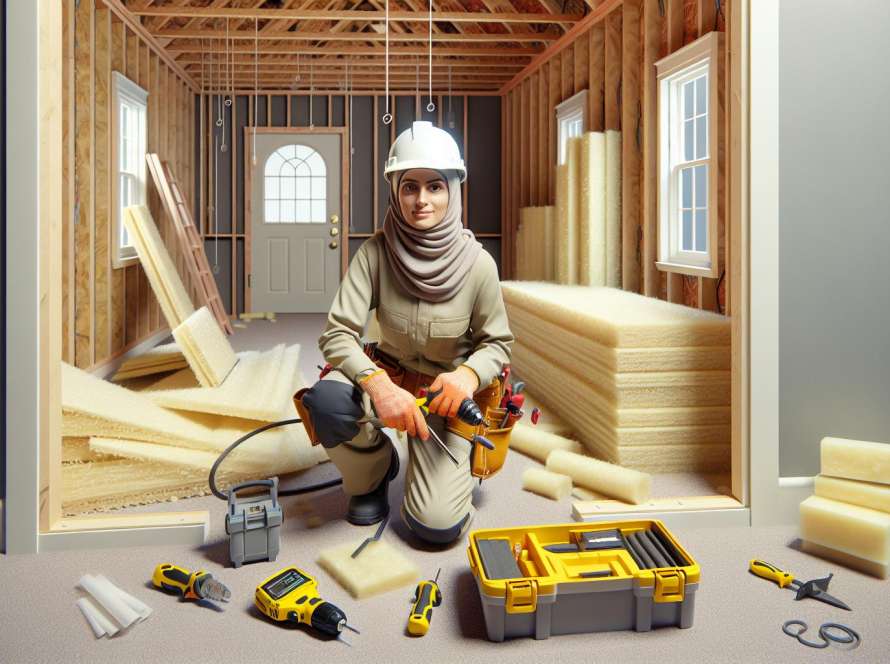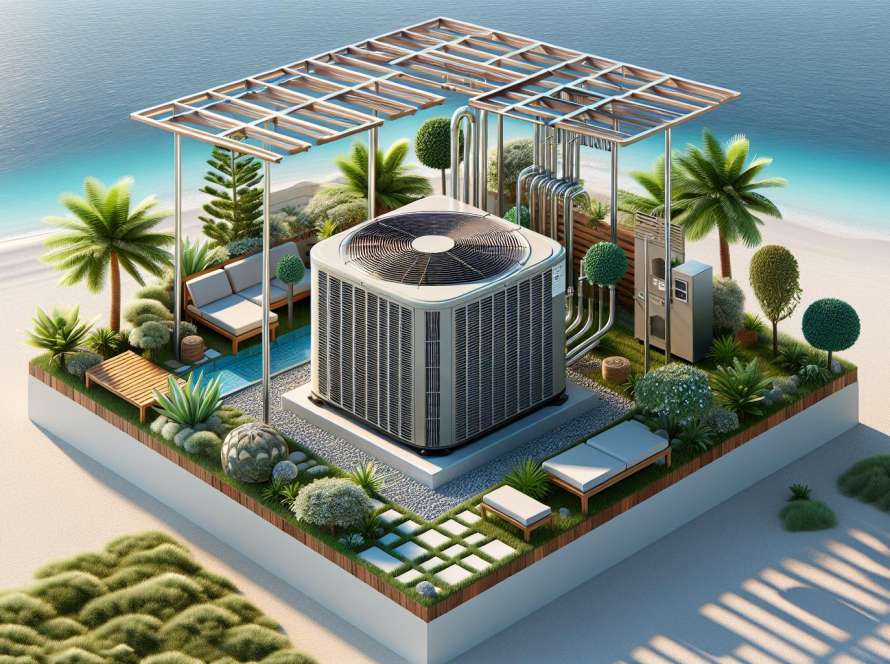When it comes to keeping our homes cool in the Florida heat, a well-functioning air conditioning system is essential. But what happens when our AC units start acting up, especially in the midst of a scorching summer? Fear not, as we’ve got you covered with some cost-effective AC repair tips that can help you stay cool without breaking the bank. From simple maintenance tasks to troubleshooting common issues, we’ll guide you through practical solutions to keep your AC running smoothly all season long.
In Florida, where the heat and humidity can be relentless, a malfunctioning AC unit can quickly turn into a major inconvenience. That’s why being proactive and knowing how to address common AC problems can save us both time and money in the long run. By following our expert tips and tricks, you’ll not only extend the lifespan of your air conditioner but also ensure that it operates efficiently, keeping your indoor environment comfortable and enjoyable. Stay tuned as we delve into the world of cost-effective AC repairs tailored specifically for the Sunshine State.
Importance of Regular AC Maintenance
Regular maintenance is crucial for ensuring your AC system operates efficiently and lasts longer. By keeping up with routine maintenance tasks, you decrease the likelihood of unexpected breakdowns and avoid costly repairs. Here’s a breakdown of the benefits based on your experience level:
For Beginners: Establishing a Maintenance Routine
- Change or clean your AC filters every 1-3 months to promote better indoor air quality.
- Inspect your outdoor unit for debris and clear any obstructions to prevent airflow issues.
- Schedule annual professional maintenance to identify and address minor problems before they escalate.
- Learn to adjust your thermostat settings for optimal comfort and energy savings.
For Intermediate Users: Enhancing System Performance
- Check and seal any leaks in your air ducts to improve efficiency and reduce energy waste.
- Clean the evaporator and condenser coils to enhance heat transfer and boost cooling performance.
- Invest in a programmable thermostat to customize cooling schedules based on your daily routine.
- Upgrade to a smart thermostat for remote access and energy-saving features.
- Conduct a load calculation to ensure your AC unit is the right size for your space, minimizing energy consumption.
- Consider installing UV lights to eliminate mold and bacteria growth within your HVAC system.
- Opt for regular duct inspections and cleanings to maintain indoor air quality and system efficiency.
- Explore zoning systems to control temperatures in different areas of your home for personalized comfort.
Remember, regular maintenance not only extends the lifespan of your AC system but also improves indoor air quality and saves you money in the long run. Keep your system running smoothly by staying proactive with these tips.
DIY Cleaning and Filter Replacement

When it comes to maintaining your AC unit, DIY cleaning and filter replacement are essential tasks that can help optimize its performance. Whether you’re a beginner looking to start with the basics or an expert aiming to enhance your maintenance routine, here are some tips tailored to different experience levels:
For Beginners: Mastering the Basics
- Start by locating your AC filters – they are often found in the air return vents or near the air handler.
- Turn off your AC unit before attempting to remove or clean the filters to avoid any accidents.
- Inspect your filters for dirt and debris – if they are dirty, replace them with new ones.
- Regularly clean or replace filters every 1-3 months to ensure optimal airflow and enhanced air quality.
For Intermediate DIYers: Enhancing Your Maintenance Routine
- Consider investing in high-efficiency filters to trap more dust and allergens, improving indoor air quality.
- Vacuum the air vents and duct openings to remove any accumulated dust and debris that can hinder airflow.
- Schedule a thorough cleaning of your AC unit at least once a year to prevent clogs and improve efficiency.
- Check the condensate drain for clogs and clear any blockages to prevent water damage.
- Perform a detailed inspection of your evaporator and condenser coils for dirt buildup and clean them if necessary.
- Use coil cleaner solutions for deep cleaning of the coils to improve heat transfer efficiency.
- Inspect the blower fan and motor for dirt accumulation and lubricate moving parts for smoother operation.
- **Consider upgrading to a smart thermostat that allows for better control and energy savings.
By following these DIY cleaning and filter replacement tips, you can prolong your AC unit’s lifespan, ensure efficient operation, and maintain optimal indoor comfort throughout the year.
Checking and Sealing Air Ducts
When it comes to cost-effective AC repair in Florida, one crucial step is Checking and Sealing Air Ducts. This task not only improves the efficiency of your system but also helps maintain a comfortable indoor environment. Here’s a guide tailored to different experience levels:
For Beginners: Essential Inspection Steps
- Locate duct openings in your home.
- Check for any visible leaks or disconnected ducts.
- Feel for air leaks around joints and connections.
- Seal small gaps with mastic or foil tape.
For Intermediate Users: Enhancing Efficiency
- Use a smoke pencil or infrared camera to detect hidden leaks.
- Inspect insulation around ducts for damage or wear.
- Consider professional duct sealing services for complex issues.
- Invest in duct insulation to prevent energy loss.
- Conduct a blower door test to assess overall air leakage.
- Opt for duct replacement if ductwork is old or severely damaged.
- Utilize aeroseal technology for a comprehensive duct sealing solution.
- Integrate zoning systems for custom temperature control.
By Checking and Sealing Air Ducts at different proficiency levels, we can enhance the efficiency of our AC units, reduce energy consumption, and create a healthier indoor environment.
Thermostat Calibration and Optimization
When it comes to maximizing the efficiency of your AC system and keeping your energy bills in check, thermostat calibration and optimization play a critical role. Whether you’re a novice or an expert in the realm of HVAC maintenance, ensuring your thermostat is accurately calibrated can make a significant impact. Let’s delve into the various levels of expertise for Thermostat Calibration and Optimization:
For Beginners: Setting the Foundation
- Start with the Basics: Understand the different types of thermostats available and familiarize yourself with the settings.
- Location Matters: Place your thermostat away from heat sources and direct sunlight to prevent false readings.
- Regular Checking: Make it a habit to routinely check and change the batteries to avoid malfunctions.
For Intermediate Users: Digging Deeper
- Programmable Thermostats: Consider upgrading to a programmable thermostat for tailored temperature settings.
- Seasonal Adjustments: Fine-tune your thermostat calibration with seasonal adjustments to optimize comfort and savings.
- Utilize Smart Technology: Embrace smart thermostats that learn your preferences and adjust settings for ultimate efficiency.
- Zoning Systems: Explore advanced zoning systems that allow for personalized temperature control in different areas of your home.
- Integration with HVAC Systems: Integrate your thermostat with your HVAC system for seamless communication and enhanced performance.
- Energy Monitoring: Invest in thermostats that offer energy monitoring features to track consumption and identify areas for improvement.
With Thermostat Calibration and Optimization, we can achieve not only a comfortable indoor environment but also significant savings on energy costs. Whether you’re just starting on your maintenance journey or looking to fine-tune your HVAC system to perfection, optimizing your thermostat is a fundamental step.
Conclusion
Incorporating these cost-effective AC repair tips can help us optimize our unit’s performance, reduce energy consumption, and enhance indoor comfort. From basic maintenance like checking air ducts to advanced strategies such as integrating with HVAC systems, there are solutions for every homeowner. By understanding thermostat calibration, exploring smart technology, and implementing zoning systems, we can achieve personalized comfort and savings. These practices not only benefit our wallets but also contribute to a more sustainable environment. Stay proactive with AC maintenance, and enjoy a cool and efficient home all year round.

